Sweeping operations and their consequences on the civilian population
Special or sweeping operations, or zachistkas as they are often referred to, were perhaps the most serious scourge experienced by the civilian population in Chechnya during all those years of war. The Natalia Estemirova Documentation Center Database (hereinafter the Database) shows that as many as 5,887 people’s lives were affected by such operations. This number includes all victims of zachistkas, regardless of the type of violation, and constitutes more than 35% of the total number of recorded victims. 4,352 persons, that is at least 73% of victims of all types of violations, were civilians. This publication describes the types of sweeping operations carried out in the Chechen Republic, the circumstances surrounding them as well as the violations committed during the course of those military operations.
The statistics of the Database indicate that out of 5,887 persons registered, 3,460 died or disappeared during zachistkas; the number of victims of the latter violation constitutes 2,202.
It should be noted that at least 1,285 persons were subjected to ill-treatment by perpetrators during or as a result of the sweeping operations. Civilians were not just insulted and humiliated verbally, but were also subjected to beatings and even torture for various purposes, including the extraction of information or simply as means of amusement by the military.
According to the data, the property of at least 859 persons was damaged or stolen as a result of special operations. This also includes situations where money was extorted from people in exchange for one’s life or the return of a kidnapped relative. For example, on 29 April 2001, at around 10 a.m., a sweeping operation began in some areas of the village of Alkhan-Kala. Ten men were detained in the course of the operation and taken to the military base in Khankala. The relatives of the detainees went to the military base in Khankala, and with the help of a Chechen intermediary working there, tried to obtain information about the detainees’ respective fates. The Chechen worker soon informed the relatives that everyone was alive and that the military was ready to release them on the condition that a ransom of 1,000 USD was paid for each detainee. After an attempt to negotiate, the amount of the ransom increased to 2,000 USD per person. The mentioned Chechen worker was soon detained himself, while the second intermediary from among the local residents was killed. As a result, communication was discontinued.[1]
According to the Database, throughout the duration of the war, in total 1,780 cases of sweeping operations had been conducted in Chechnya.
A distinction can be made between the two types of special operations conducted in the Republic depending on their intended purpose. So-called addressed operations were targeted special operations, whereas large-scale special operations used large amounts of military equipment and personnel. Each are addressed separately below.
Targeted special operations
Targeted operations were considered as local troop and police operations carried out against a particular person or a group of persons within the territory of a particular household or a flat, blocking a street or an area. Such operations were accompanied by murders and the unlawful detention of one or more persons, often resulting in their disappearance. Often, military personnel may have received a tip or information about the alleged involvement of a particular individual in the activities of the armed forces. A number of such operations are provided as examples below.
On 3 July 2004 at dawn, in the village of Starye Atagi in the Grozny District, unidentified armed people in armored personnel carriers (APCs) and UAZ vehicles took three residents from their houses, one of whom was 71 years old. According to the relatives of one of the kidnapped victims, the military had arrived at sunrise. Those who were in the house were awake at the time, as they were preparing for the morning prayer. Having broken into the courtyard, the military, without explanation, grabbed the only man who was in the house. They did not explain the reasons for his detention and took the victim’s passport with them. In the evening of the same day, at around 7 p.m., all three abducted men were brought to the outskirts of the village and thrown out of a car. As they had been severely beaten, they were in critical condition. The beatings had impaired the vision of one of the victims. The victims refused to talk about their whereabouts and conditions of their kidnapping.[2]
In the late evening of 9 May 2004 in the village of Goy-Chu in the Urus-Martanovsky District, Russian law-enforcement officers, as it was revealed later, kidnapped a 25-year-old local resident. According to his relatives, it took them just a few minutes to do so. Without any introduction or explanation for their presence, armed men in masks forced him into an unmarked vehicle and took him in an unknown direction. The man’s whereabouts were established the following day. His relatives found out that he was being held in a temporary detention facility in the Urus-Martanovsky ROVD, where he was being subjected to torture and beatings. The officers subsequently returned to Goy-Chu and searched the man’s house. Once again, they failed to provide an explanation to the relatives for the reasons behind the search. Unable to recover anything illegal, they then planted a grenade in one of the rooms in the house and stated they had found it during the search.
On 12 May 2004, the abducted 25-year-old was found in the Urus-Martan hospital in a critical state. The relatives took him to Ingushetia for medical treatment, but he died on route. An autopsy revealed that he had died of acute renal failure, pulmonary edema and vital organ damage as a result of the torture and beatings he had received.[3]
The victims in this incident were the deceased himself and four of his relatives who had complained multiple times to the various national bodies, but nevertheless failed to initiate an effective investigation into the kidnapping and murder of their relative.
No less than 1,441 cases of targeted special operations carried out in Chechnya during the wars are documented in the Database (see chart 1). During these, at least 2,949 people were injured and 2,098 people were either killed or had disappeared.
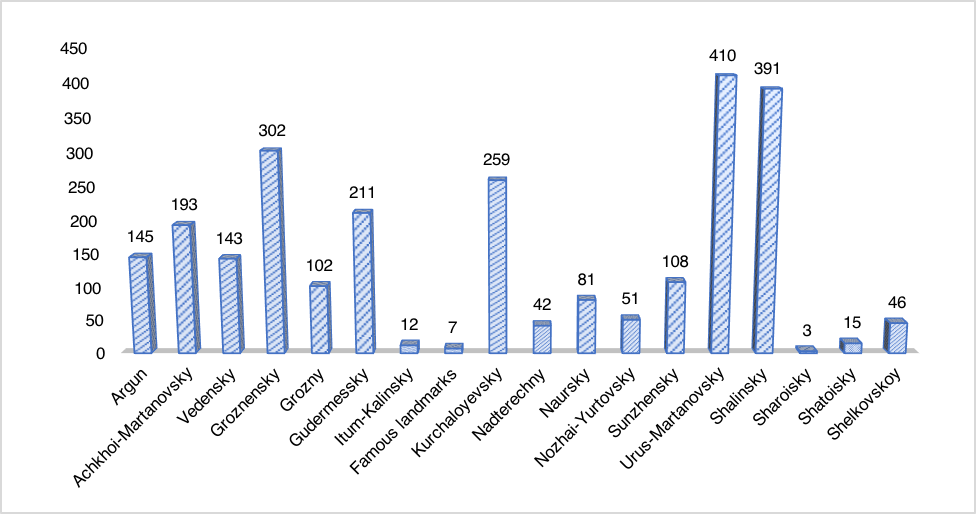
Among the victims of targeted sweeping operations, 145 were female, five of which were minors. Accordingly, 2,804 victims were men, of which 93 were minors at the time of the violation.
As noted above, sweeping operations were not only followed by the kidnapping and killing of civilians, but also included the plundering of property. At least 388 people suffered from barbaric raids during the targeted sweeping operations.
It has been established that the property of 140 people was either destroyed or damaged. This included the common practice of breaking down doors, breaking windows, burning houses and killing livestock. In one of these incidents, which took place on 30 November 2003, unidentified law enforcement officers arrived with several APCs to a resident’s house in Argun. The military kicked the owner and his spouse out of their house into the courtyard and set the house alight using a Molotov cocktail. They left the courtyard only once the house had been completely engulfed in flames. The military also stole a briefcase from the house which contained documents relating to the house owner and family photos. The owner was detained and beaten whilst in detention and two of his sons were kidnapped. The corpse of his son was discovered in Grozny four months after the kidnapping.[5]
The plundering of property affected the lives of at least 221 civilians in the Chechen Republic. The military not only took away valuable items such as gold and money, but also other household goods such as, hygiene items, food, equipment, clothing, bed linen, blankets, kitchen utensils etc.
Other violations relating to the right to property included extortion or the paying of bribes in exchange for the release of a kidnapped relative. In total, the Database contains 63 such cases. Often, relatives were forced to “buy out” those abducted and detained in exchange for machine guns.
Large-scale sweeping operations
Large-scale sweeping operations were troop and police operations which were accompanied by the blocking of either a part of or an entire settlement(s) and did not usually target a specific individual. In some cases, settlements could be blocked for a period ranging from several days to a month. Hundreds of people at a time could therefore become victims during such raids.
In total, at least 2,947 people became victims of such large-scale, as well as smaller, special operations.
At least 1,505 of these victims were particularly vulnerable at the time of the sweeping operations (see chart 2). For example, there were at least 167 people over the age of 60, 87 teenagers and 61 children under the age of 14 that were injured during the large-scale special operations. In addition, ten pregnant women, and at least 58 disabled and 63 sick people were also victims.
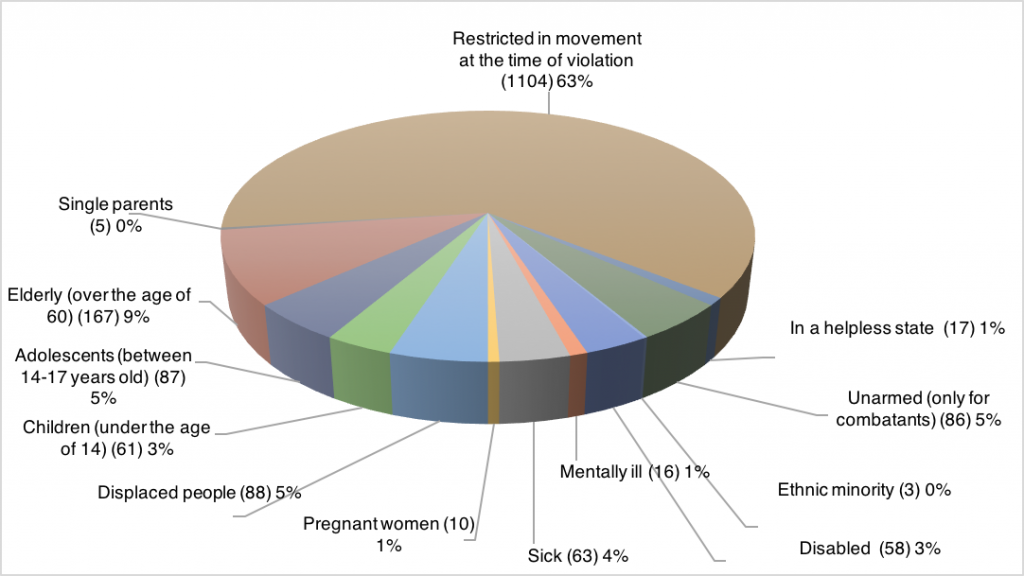
The majority of the victims were civilians. Their numbers amount to 2,192, or 73% of the total number of victims who suffered during the large-scale sweeping operations.
One such sweeping operation was carried out in the village of Tsotsi-Yurt in the Kurchaloyevsky District between 25 March – 1 April 2002. The operation was initiated in response to an APC explosion on the outskirts of the village which resulted in the death of one military personnel. On the night of 25 March, the village was blocked by the Russian military. The following morning, personnel from the temporary department of internal affairs and the military commandant’s office of the Kurchaloyevsky District entered the village. All men aged 14 and over were detained and taken to a temporary filtration point. Those who found the means to buy their way out were not taken away. Approximately 300 people in total were detained during the sweeping operation, all of whom were beaten and subsequently forced to sign an acknowledgment declaring that they had not suffered any mistreatment at the hands of the military personnel. 14 of the local residents were denied release by the military and the reasons for their detention remain unknown. As in the cases of targeted operations, these large-scale operations were also accompanied by lootings. In Tsotsi-Yurt, personal belongings as well as livestock were stolen from local residents.[6]
Other large-scale sweeping operations took place in the village of Sernovodsk in the Sunzhensky District on 2 July 2001, and in the village of Assinovskaya in the Achkhoi-Martanovsky District of Chechnya between 3 and 5 July 2001. In both cases, APCs had exploded using blast mines which resulted in the deaths of at least five servicemen.
Following the explosion on the outskirts of the village of Sernovodsk, the military stopped over 100 vehicles. The first wave of attacks against the local population, including women and children, involved searches, the use of explosives, and shelling and beatings. During this process, dogs and cows were shot, and gold jewelry was forcibly taken from the women. The ensuing second attack resulted in a wave of soldiers detaining the entire male population. The arrested individuals were taken to the village of Samashki and tortured. The Database contains the names of 44 such persons who became victims of punitive measures by the military in Sernovodsk. All of them were illegally detained and three of them disappeared.[7]
During the sweeping operation in the village of Assinovskaya, at least 300 people were detained and taken away to a field at the edge of the village, where they were interrogated and beaten. During this operation, the military personnel also engaged in mass lootings, extortion, beatings, the insulting and torture of residents, and illegal arrests. On the evening of 3 July, the majority of the detainees, together with a number of those kidnapped from Sernovodsk and who were transferred to Achkhoi-Martan, were taken to a forested area near the village of Chemulga and released. Since it was dangerous to walk through the forest or move along the roads blocked by the military, the released individuals remained in the forested area for approximately one day. It was only on 5 July, and after having risked their lives to do so, that the released individuals reached the village of Chemulga. From there, they were finally able to travel back to their places of residence or Ingushetia.[8]
The statistics provided were updated on 26 March 2019 and again on 14 May 2019.
The data is subject to change in view of the ongoing work by the Natalia Estemirova Documentation Center on the search and identification of victims of the armed conflict.
Audio library
Listen to the story of a refugee from Alkhan-Kala concerning the “sweeping operation” in the village.
For details on this story, see the “Audio” section.
Listen to the story of women who left the village of Katyr-Yurt.
For details on this story, see the “Audio” section.
Listen to the story of a woman who visited her village following a “sweeping operation”.
For details on this story, see the “Audio” section.
Media library
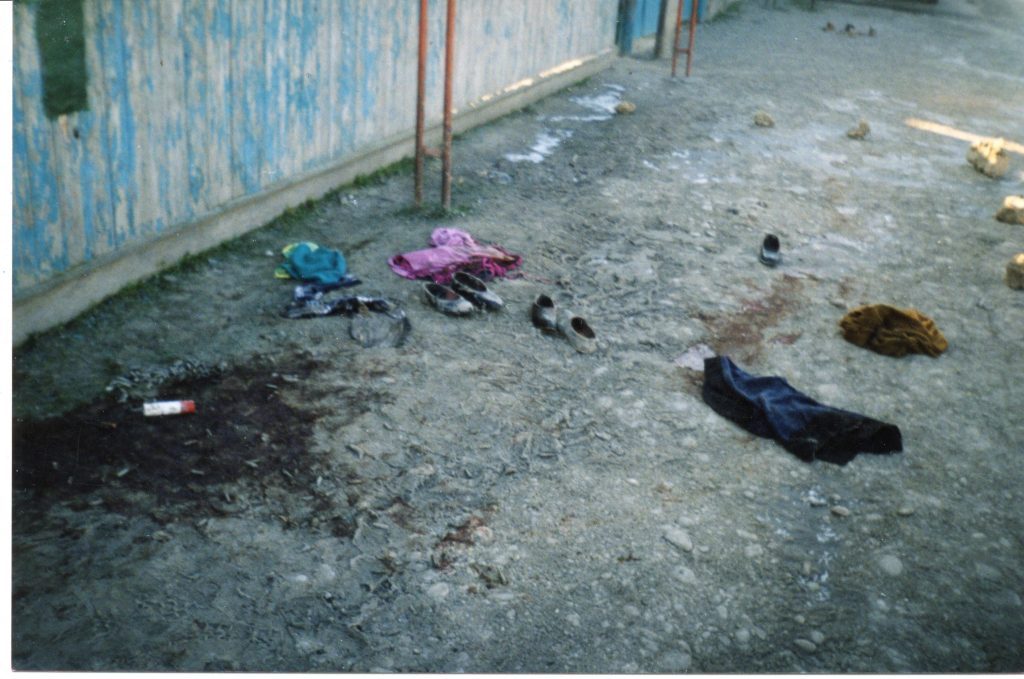
NEDC document 33757 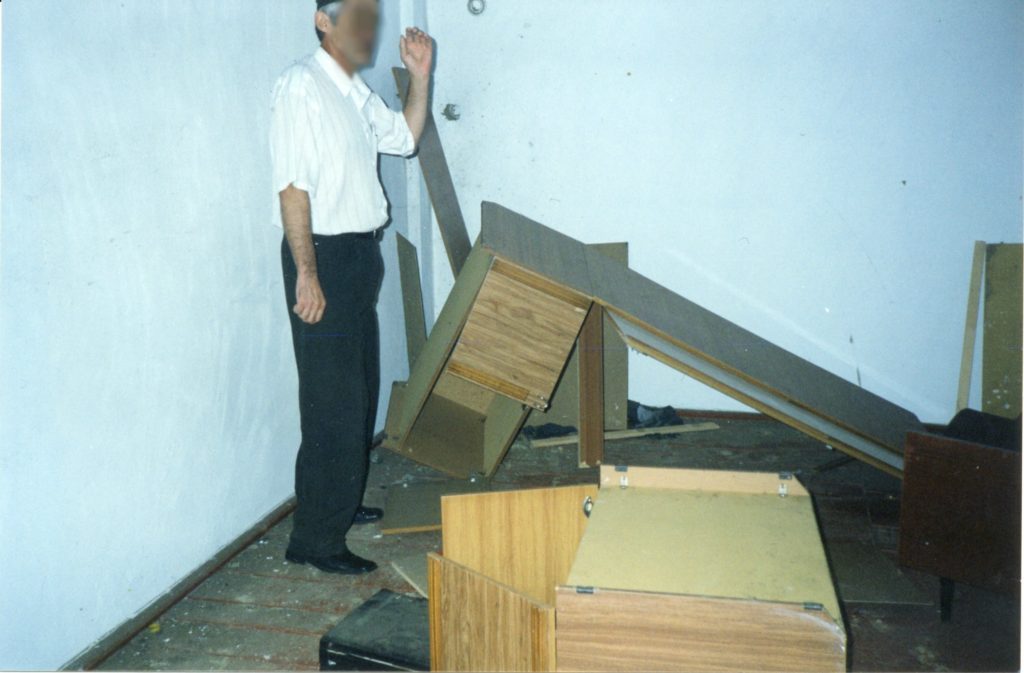
NEDC document 33759 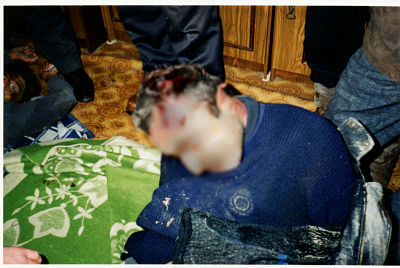
NEDC document 33760 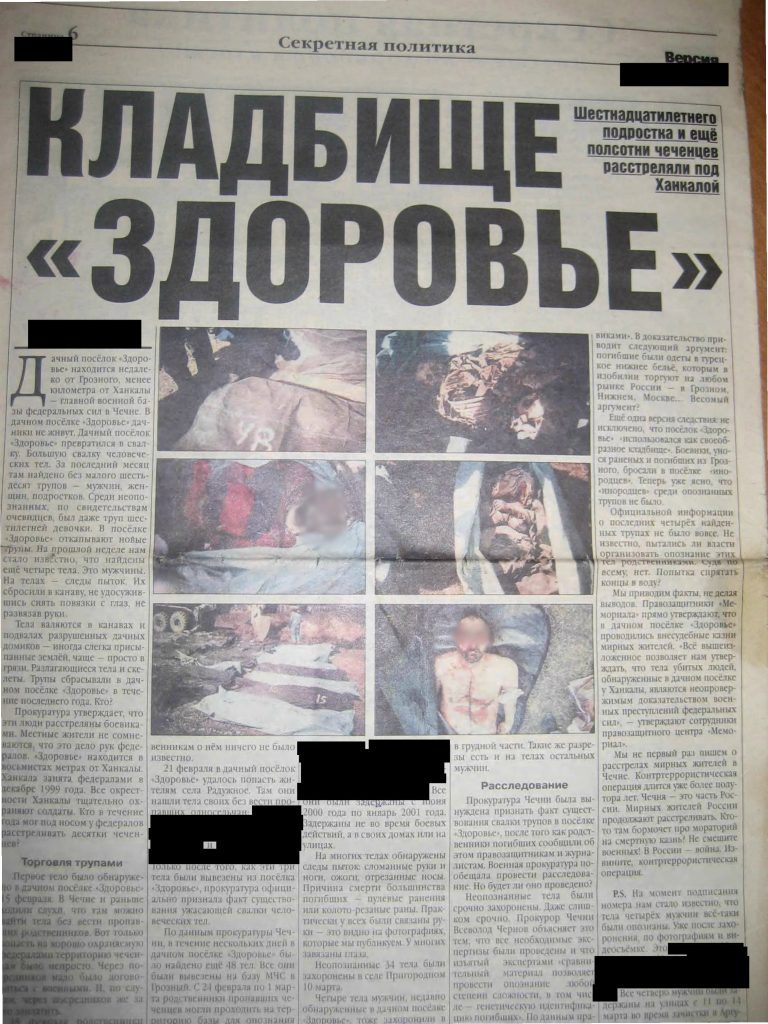
NEDC document 25718 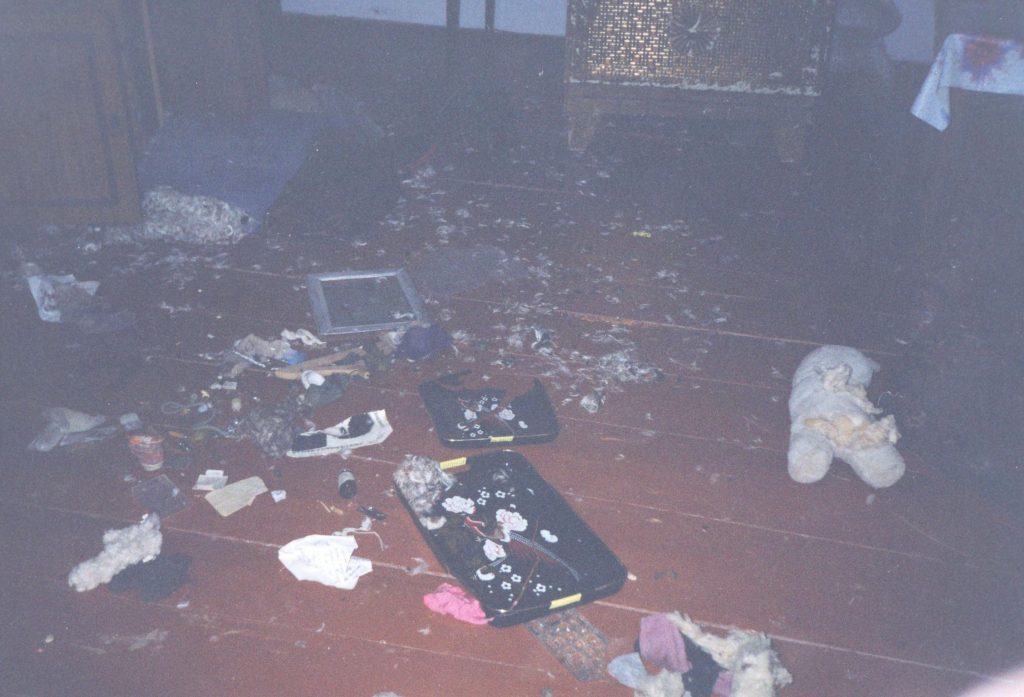
NEDC document 32105 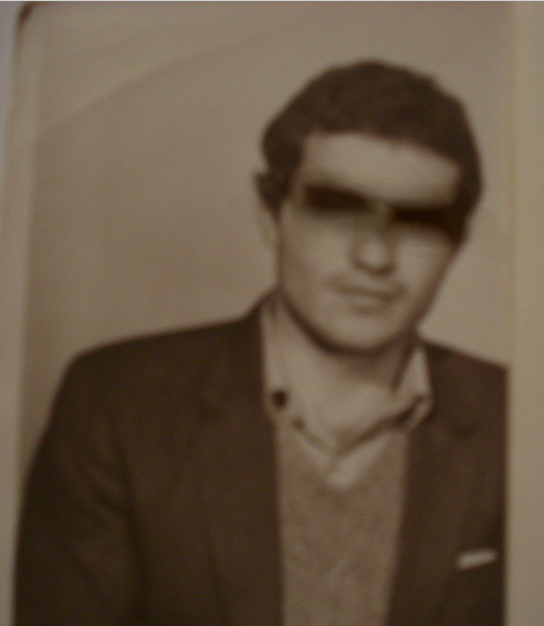
NEDC document 24401
References
[1]Incident № 646 «Zachistka in Alkhan-Kala, April of 2001».
[2]Incident № 1222 «A Targeted special operation in the village of Starye Atagi, July 2004».
[3]Incident № 1301 «Apprehension and murder of a Goy-Chu resident, 9 May 2004».
[4]The total number of victims, distributed by geography, may be higher than the indicated number of 2,949 in the text. This is due to the fact that in the Database a geographical location may be recorded more than once in cases where a single victim suffered several violations in the same geographical location.
[5]Incident № 1074 «Special operation in Argun, November 2003».
[6]Incident № 596 «Zachistka in the village of Tsotsi-Yurt from March 24 to April 4, 2002».
[7]Incident № 510 «Incidents in Sernovodsk, July 2001».
[8]Incident № 2411 «Zachistka in Assinovskaya, July 2001».
